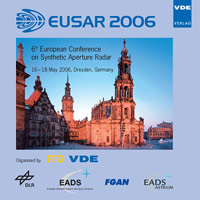A New Technique for Interferometric Sounding of Ice Sheets
Konferenz: EUSAR 2006 - 6th European Conference on Synthetic Aperture Radar
16.05.2006 - 18.05.2006 in Dresden, Germany
Tagungsband: EUSAR 2006
Seiten: 4Sprache: EnglischTyp: PDF
Persönliche VDE-Mitglieder erhalten auf diesen Artikel 10% Rabatt
Autoren:
Rodríguez, Ernesto; Freeman, Anthony (Jet Propulsion Laboratory, California Institute of Technology, USA)
Jezek, Ken (Ohio State University, USA)
Wu, Xiaoqing (Vexcel Corporation, USA)
Inhalt:
The height of the Antarctic and Greenland ice sheets plays a crucial role in determining the forces driving the motion of the ice. A map of the reflectivity of the ice sheet basal layers would also greatly enhance our knowl edge of the basal conditions and the presence of melted water, which can lubricate ice sheet motion. Low-frequency radar sounders, such as the VHF Kansas University sounder, have demonstrated the feasibility of pene trating the ice sheets. However, these systems are limited by the fact that depth data can only be collected along the nadir track. Ideally, a swath instrument would be ideal in the collection of this type of data. However, when pointing off-nadir the contamination of the subsurface signal by returns arriving at the same time from the ice sheet surface (the clutter contamination problem) has precluded the examination of swath instruments for sound ing applications. In this paper, we introduce a new technique which can be used for filtering and rejecting the surface clutter from the subsurface returns. The technique is based on the fact that, for near nadir incidence, the interferometric fringe frequency from the surface of the ice sheet is significantly different from the fringe fre quency of the subsurface. We show how this feature can be used to isolate and filter the surface returns, resulting a reduction of the clutter contribution by several orders of magnitude. The technique is analyzed analytically and via an interferometric SAR simulator. The concept described here is then scaled to a spaceborne application. We present the mission and instrument parameters and the expected performance. The concept presented here could also be applied to the study of the ice sheet thickness of Jupiter’s moon, Europa.


